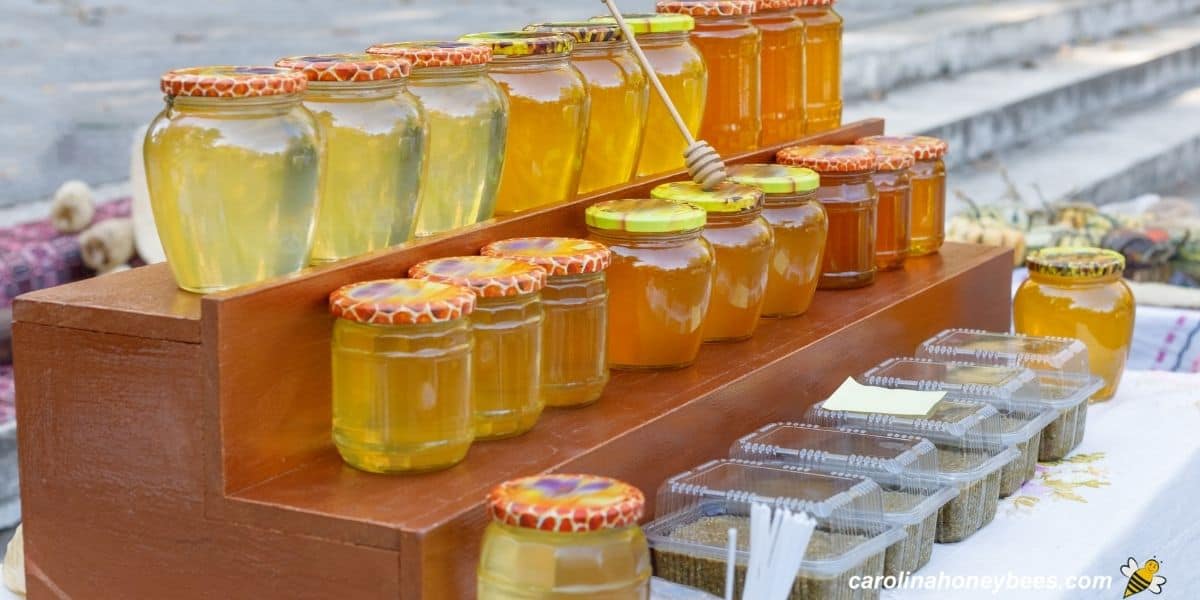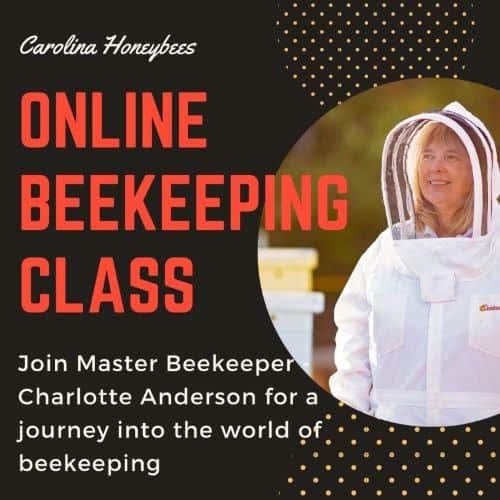Honey Prices – What to Charge?
Is it just me or does it seem that food prices are always going up – including honey prices! There are some good reasons for the wide range of prices for honey -that only beekeepers understand. If you have ever wondered why honey is so expensive or want to know how to find the best price, stay tuned.

As with any product, part of setting the price when selling honey has to do with the effort required to get the product from the field (hive) to the buyer. Every individual along the way must make a decent profit and all of these costs are added on to the sale price.
Why Honey is Expensive
Given the hard work and unpredictable harvest, honey prices can vary greatly from one season to another – one location to another. But, there are some good reasons for why that jar of sweetness costs more than you might expect.
Producing Honey is Difficult
Honey is made by bees from plant nectar collected from millions of flowers. Some true honey plants produce a lot of nectar-others entice the bees with smaller amount. After nectar is transformed into honey, it is stored in the hive to sustain the colony over the cold months of Winter.
Thankfully, bees do a very good job of making honey. In fact, they can make so much that beekeepers are able to harvest the surplus from their apiary.
But, it is not only the honey bees that are involved in honey production. In spite of the hard work invested by the bee colony, there is still much more to do in order to bring in the crop.
The idea of walking to the hive, picking up a full box and bringing it inside is a cute idea – but that is not how things work. At least, not normally.

The work to bring a jar of honey to you begins months in advance. After the crop is ready – it must be harvested.
The beekeeper must invest several hours (often wearing a beekeeping suit during Summer heat) and risk some stinging situations to remove bees from supers and get the boxes under cover.
One Summer I came in from the July heat after harvesting honey from the hives exhausted. I said to my husband, “if anyone complains about the price of honey this season – I am going to invite them to spend the afternoon with me” LOL. But seriously, it can be hard physical labor.
After full supers (boxes) are safe inside, in most cases, the honey is extracted from the comb. This separates liquid from beeswax comb. Most consumers prefer liquid honey in a container.
The empty frames of comb can then be used by the bees again! This is a great savings to the colony. They do not have to rebuild all the wax.
In some instances, beekeepers prepare chunk honey. Yes, you can eat raw honeycomb and it is delicious.
When selling comb, the extraction step is skipped but cutting and boxing the comb squares requires time and containers.
How to Price Honey: Wholesale, Retail, Direct
If you are a consumer, you probably want to get the best product for the lowest cost. Nothing wrong with that.
If you are the producer (beekeeper), you want to get a good price for your harvest. Something to ease the pain of all your expenses and hard work. Nothing wrong with that either.
Honey prices will vary – a lot. For the consumer, read the labels carefully. You will see words used that are not regulated by the USDA.
They are simply part of honey marketing. Pure, natural, raw honey and similar phrases mean different things to different people.
Expensive lab tests are necessary to reliably check honey for purity. If you are the seller, it is important to convince your customers of your reliability.
Wholesale honey prices are usually the cheapest. If the consumer has a contact for wholesale product, buying in bulk should save you some money.
For the beekeeper, selling in bulk gives you the advantage of getting rid of a large amount of product at once.
You do not have to deal with individuals and make a lot of separate sales. However, you do not get as much per jar – often a 25% or more discount off retail.

The average consumer that buys a jar in a store or even at a farmers market pays what the market will bear.
Honey prices fluctuate with the season, size of the jar or container and the variety being sold. Special honey types such as Tupelo, Sourwood or Orange Blossom bring a higher price per ounce.
Buying direct from the beekeeper can represent a savings to the consumer. The honey has not passed through so many marketing channels.
However, it is important to remember that a hobby beekeeper is not able to give big discounts that might be found in a large retail establishment.
Beekeeper Guidelines for Pricing Honey to Sell
It is common for even small-scale beekeepers to sell excess honey. For most, this is a way to recap some of the costs of beekeeping. Selling a case or two of product that you don’t need helps pay for supplies, equipment etc.
Things to consider:
- local selling prices
- varieties – regional favorites
- certifications
- marketing
As a producer, you need to keep your expenses in mind when pricing jars of honey. To a degree, you are subject to the whim of what other beekeepers in your area are doing.
If they are pricing jars absurdly low, it will be difficult for you to get twice that amount. But, if you are not really making a profit – why bother to sell.
Don’t be afraid to charge a little bit more than others in your area. Talk it up – explain why your product is a better choice and worth the price.
In my region, Sourwood honey always goes for a premium price. In some areas of NC, a purple honey is sometimes produced. Any special honey should have a higher price per pound.
If you go to the trouble to set up a state inspected honey house – some consumers will appreciate that. You don’t have to put others down – talk your product up instead.
Perhaps you use fewer chemicals in your hives or bottle your honey jars following state regulations for cleanliness – all of these ideas go into honey marketing.

This post may contain affiliate links. As an Amazon Associate, I earn from qualifying purchases. Please read my disclosure.
Setting the Price
A good place to start when considering a fair price for your honey is to check national statistics. The United States Department of Agriculture (USDA) publishes a report every month that gives some basic guidelines.
This is very important to commercial beekeepers and larger producers that want to sell buckets or barrels.
Local honey prices are more dictated by the price set by others in your region. It is a supply and demand market.
Some beekeepers I know, do not sell their crop right away. They wait a few months until the “low-ballers” are sold out and then price their jars a bit higher.
For the hobby beekeeper with a few jars to sell, check out the local competition. What is a quart (or pound) of honey going for in your area -within a 100 mile radius?
Price your jars just a bit above – you may not sell it as quickly but you will be getting more money for it at the end.
Thankfully, properly stored honey never spoils-so you don’t have to be in a rush to move the product.
If your stored honey crystallizes, that is easily fixed – you can safely reliquify or decrystallize honey. In fact, it is a good idea to place special labels on your larger jars of honey so the consumer understands it is natural.
The import of foreign honey has forced market prices down. But, what are people buying when they choose cheap honey? I don’t trust foods from other countries. Read the honey label and if you choose to buy it – go in with your eyes open.
FAQs
Honey is difficult to produce. Many expenses and physical labor go into carrying for the hives and processing the harvest.
The price of honey per pound varies greatly with from $5 – $10 being an average. It depends on nectar source, time of year, jar size and other factors.
There is approximately 3 pounds of honey in a US quart jar. Weigh varies a bit by source.
For the industry standard, a 5 gallon bucket holds (60#) pounds of honey.
Price your honey in comparison with other sellers in your area. Small jars sell for more per ounce than the larger quart jars. Don’t forget your expenses and add in a profit.
On average a gallon of honey weighs 12 pounds.
A Final Word
When you are buying honey from a local beekeeper, try to be understanding about costs. A lot of hard word is required to get that jar of golden goodness in the jar. It is a supply and demand market. In years when supply is low, honey prices will be higher.


